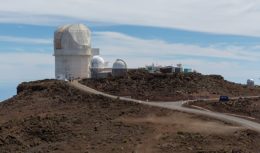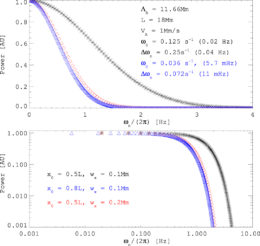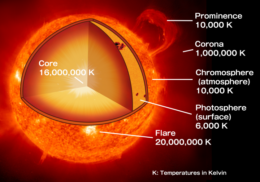The solar corona has a problem: it’s weirdly hot! A new study explores how magnetic waves might solve the mystery of the unusually hot corona by transporting energy to the outer atmosphere of the Sun.
The Problem with the Corona
The corona, the outer layer of the Sun’s atmosphere, has typical temperatures of 1–3 million K — significantly hotter than the cool 5,800 K of the photosphere, the surface of the Sun far below it. Since temperatures ordinarily drop the further you get from the heat source (in this case, the Sun’s atom-fusing center), this so-called “coronal heating problem” poses a definite puzzle.As is the case for many astronomical mysteries, the answer may have something to do with magnetic fields. Alfvén waves, magnetohydrodynamic waves that travel through magnetized plasma, could potentially carry energy from the convective zone beneath the Sun’s photosphere up into the solar atmosphere. There, the Alfvén waves could turn into shock waves that dissipate their energy as heat, causing the increased temperature of the corona.

The Daniel K. Inouye Solar Telescope, located on the summit of Haleakala in Hawaii, is scheduled to be completed in 2018. [Ekrem Canli]
Predicting Observations
Alfvén waves as a means of delivering heat to the corona makes for a nice picture, but there’s a lot of work to be done before we can be certain that this is the correct model. Observational evidence of Alfvén waves has thus far been limited to specific conditions — and the observations have not yet been enough to convince us that Alfvén waves can deliver enough energy to explain the corona’s temperature.
Lucas Tarr, a scientist at the Naval Research Laboratory, argues that upcoming solar telescopes may make it easier to detect these waves — but first we need to know what to look for! In a recent study, Tarr uses a simplified analytic model to show which frequencies of waves are likely to carry power when magnetic field lines in the corona are pertubed.
A Promising Future

The power carried by Alfvén waves as a function of frequency, as a result of an initial perturbation, plotted for several different initial conditions (such as the size of the perturbation or the length of the loop on which it is introduced). [Tarr 2017]
Tarr’s findings confirm that with the cadence and sensitivity of current instrumentation, we would not expect to be able to detect these Alfvén waves. The results do indicate, however, that high-cadence observations with future telescope technology — like the instrumentation at the upcoming Daniel K. Inouye Solar Telescope, which should be completed in 2018 — may have the ability to reveal the presence of these waves and confirm the model of Alfvén waves as the means by which the Sun achieves its mysteriously hot corona.
Citation
Lucas A. Tarr 2017 ApJ 847 1. doi:10.3847/1538-4357/aa880a


3 Comments
Pingback: Alfven wave heating of the solar corona
Pingback: Observando los grandes movimientos solares con ojos pequeños. – Asociación de Aficionados a la Astronomía del Uruguay
Pingback: November 10, 2017 | Colorado Space News